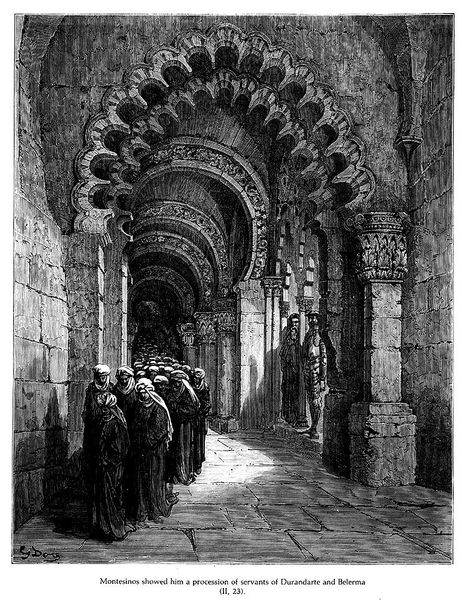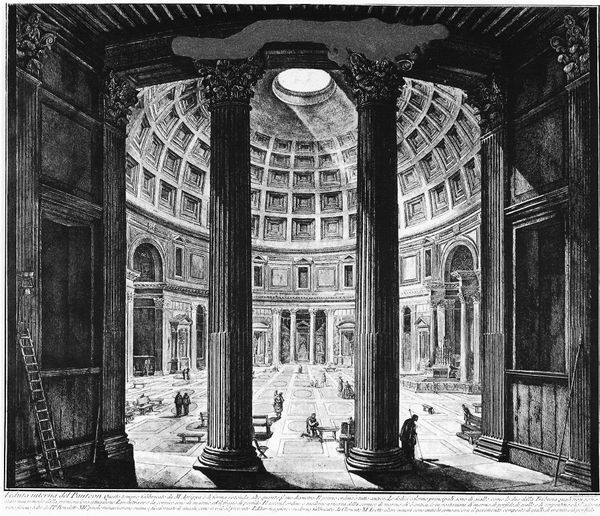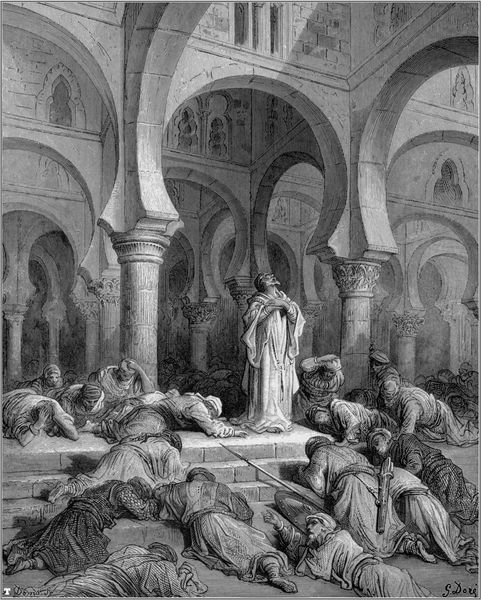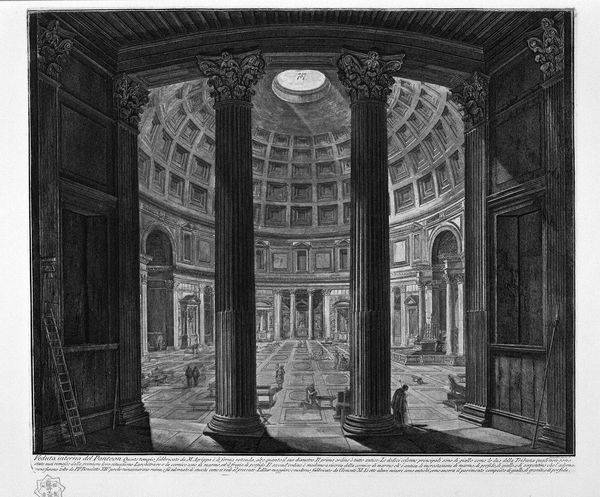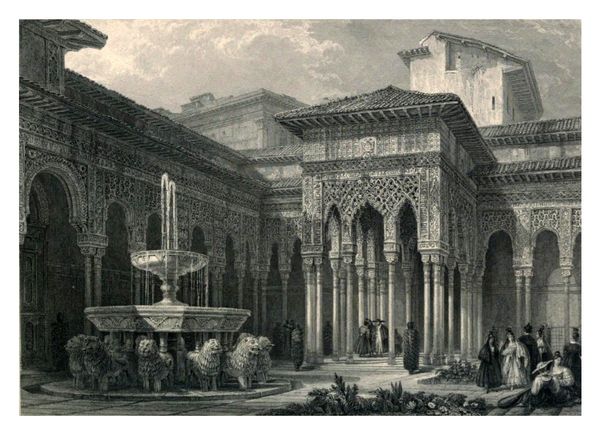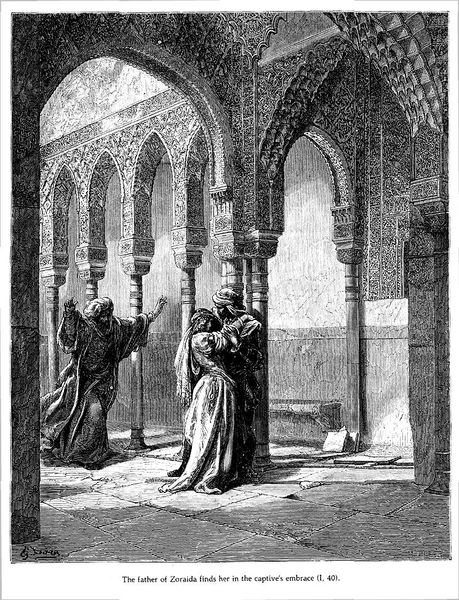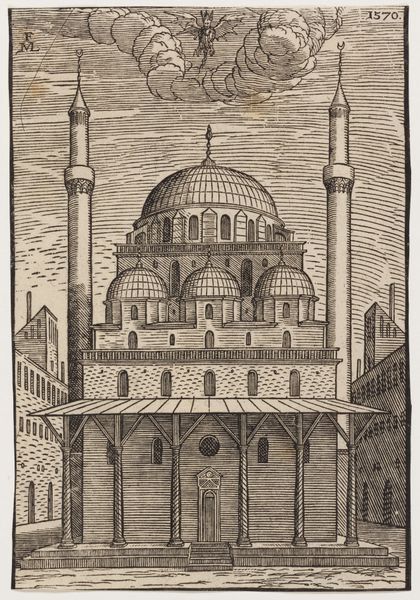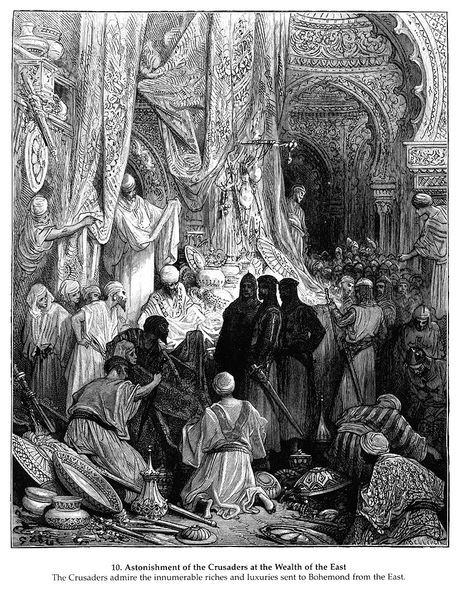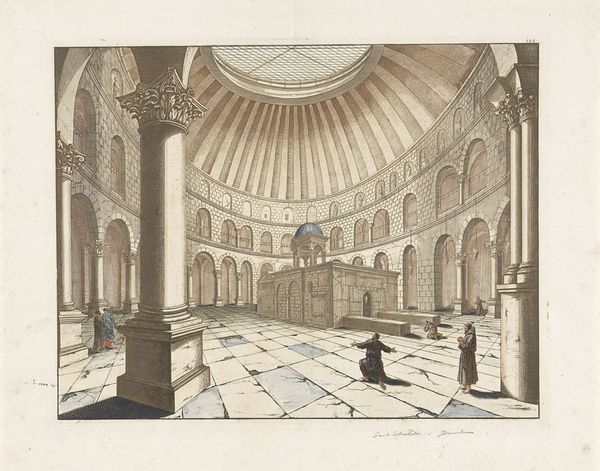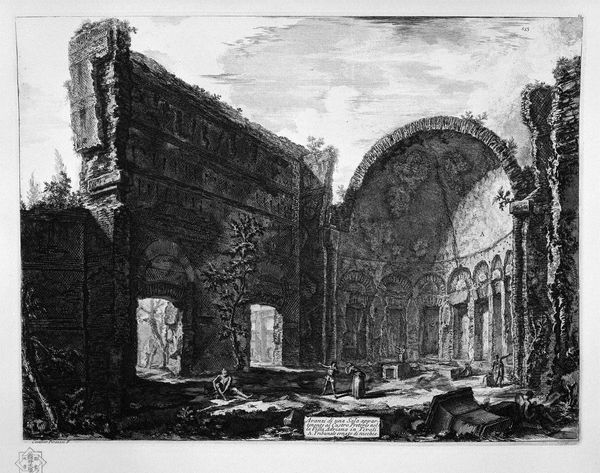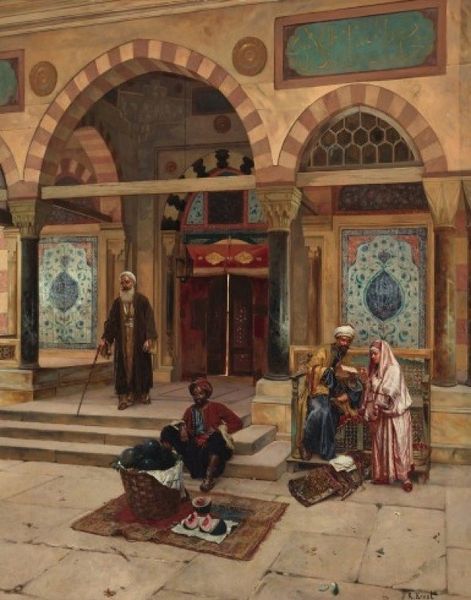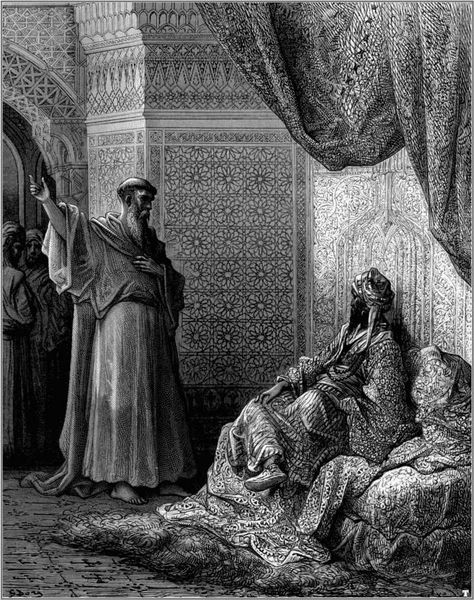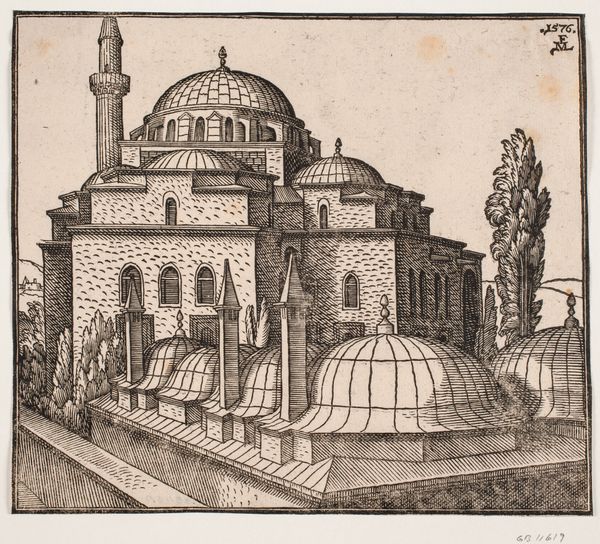
drawing, print, photography, engraving
#
drawing
#
statue
#
narrative-art
# print
#
holy-places
#
photography
#
column
#
carved
#
men
#
islamic-art
#
history-painting
#
engraving
#
statue
#
building
Copyright: Public domain
Curator: Let's discuss this engraving of "The Holy Sepulcher," attributed to Gustave Dore. What strikes you first? Editor: It's stark, incredibly detailed. The sheer architectural volume conveyed through these precise lines is almost overwhelming. A very somber mood permeates it; all the monochrome serves to underscore the solemnity of the site. Curator: Yes, Dore has really captured the grandeur and spiritual weight. The Holy Sepulcher has long been a contested space and symbolic nexus point between the Islamic and Christian worlds, loaded with the complicated history of the Crusades, as implied in the text at the bottom. Editor: The composition itself draws the eye directly to the Sepulcher in the center. Note how the artist's use of light and shadow highlights its intricate carvings and distinct architecture. Also, that heavy dome looming over the worshippers provides such a stark sense of enclosure and purpose. Curator: Consider also how people from the West view this space, a collision of historical, political, and religious identities. This image participates in that historical gaze and idealization of it as the end point of pilgrimage. There is definitely a romantic aura despite the simple blacks and whites. Editor: Yet that starkness, despite the idealization, might communicate something darker. It emphasizes the severity and solemnity that, perhaps, better align with our contemporary understanding. Curator: The way this location signifies the death and resurrection, as well as its occupation as the epicenter of Christian pilgrimage. The symbol of it must hold some powerful cultural weight across history. Editor: Agreed. Overall, a fascinating piece demonstrating Dore's control of line and texture to evoke a particular space and emotional experience. Curator: Absolutely. It leaves one with so much to unpack regarding religious architecture and the intersection between history, space, and symbol.
Comments
No comments
Be the first to comment and join the conversation on the ultimate creative platform.
